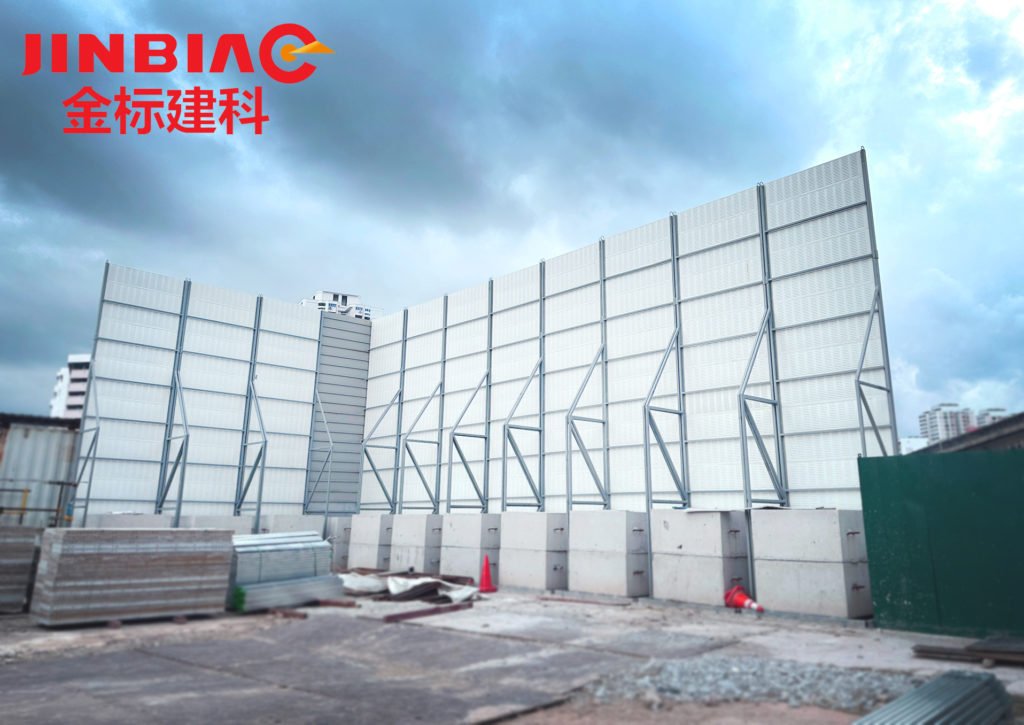
Noise pollution is a pervasive problem in our modern world. Busy roads, construction sites, and industrial areas emit high levels of noise that can disrupt our daily lives. Fortunately, portable noise barriers offer an effective solution to this problem. These barriers are designed to reduce noise levels by absorbing or reflecting sound waves.
But how can we use them effectively?
- Identify noise source and environment
In order to effectively use portable noise barriers, it is important to first identify the noise source and the environment in which it is occurring. This will allow you to determine the appropriate placement and type of noise barrier needed to effectively reduce the noise levels. To identify the noise source, a sound level meter or similar device may be used to measure the decibel levels at various points around the area. It is also important to consider the frequency and duration of the noise. Once the noise source has been identified, the environment must also be taken into account.
Factors such as the distance between the noise source and the listener, the type of surface the noise is reflecting off of, and any potential obstacles or barriers in the area should be considered in determining the best placement for the noise barrier. By taking these factors into account, you can effectively use portable noise barriers to reduce noise levels and create a more comfortable environment.
- Choose the right barrier material
When it comes to effectively using portable noise barriers, choosing the right barrier material is crucial. The material should have a high Sound Transmission Class (STC) rating to effectively block out noise. Materials such as vinyl, PVC, and composite materials are commonly used in portable noise barriers due to their soundproofing properties. It is essential to ensure that the material used is of high quality and thickness as thinner materials will be less effective in reducing noise levels.
Additionally, the material should be weather-resistant to withstand harsh outdoor conditions. Proper material selection can significantly improve the effectiveness of portable noise barriers in reducing noise levels in various applications.
- Proper placement of barriers
Proper placement of barriers is a critical element in effectively using portable noise barriers. To ensure maximum noise reduction, barriers should be placed as close to the noise source as possible. This will help to mitigate the amount of noise that escapes into the surrounding environment.
Barriers should be positioned in a manner that blocks the direct line of sight between the noise source and the receiver. This will help to prevent sound from traveling directly to the receiver and instead force it to travel around or over the barrier, reducing the overall noise level. Finally, barriers should be placed in a manner that minimizes any gaps or openings between the barrier and the surrounding environment. Any gaps or openings can allow noise to bypass the barrier and reduce its effectiveness. By following these guidelines, portable noise barriers can be used effectively to reduce noise levels and improve overall environmental conditions.
- Maintain and adjust as needed
In order to effectively use portable noise barriers, it is important to maintain and adjust them as needed. This includes regular cleaning, inspection, and repair of any damages that may occur over time. Proper maintenance will ensure that the barriers continue to function at their optimal level and provide maximum noise reduction.
It is also important to adjust the barriers as needed based on changes in your environment or specific noise levels. This may include adjusting the height or angle of the barriers, or adding additional barriers as necessary to achieve the desired level of noise reduction. By regularly maintaining and adjusting your portable noise barriers, you can ensure that they continue to provide effective noise reduction over time.
- Monitor noise reduction effectiveness
One way to effectively use portable noise barriers is to monitor their noise reduction effectiveness. It is important to regularly check if the barriers are reducing the noise as expected, especially in areas where noise levels fluctuate throughout the day. This can be done by measuring the sound levels before and after the installation of the barrier using a sound level meter.
A reduction in decibel levels indicates that the barrier is working effectively. It is recommended to perform these tests periodically to ensure that the barrier is still providing adequate noise reduction, and to make adjustments if necessary. By monitoring the effectiveness of the portable noise barriers, you can ensure that they are providing the desired noise reduction and creating a more comfortable environment for workers and nearby residents.
In conclusion, portable noise barriers can be an effective solution for reducing noise pollution, particularly in construction sites, outdoor events, and other similar settings. To maximize their effectiveness, it is important to choose the right type of barrier for the specific application, ensure proper installation and maintenance, and follow safety guidelines. By implementing these measures and utilizing the latest technologies, portable noise barriers can help create a safer, quieter environment for workers and the public alike. As professionals in various industries continue to explore innovative ways to tackle noise pollution, portable noise barriers remain a valuable tool in the fight against excessive noise.
Hebei Jinbiao is a leading company in Noise Barrier products and Fencing products in Singapore. We guarantee to provide you with the most high-quality Sound Barrier and Fencing products along with our dedicated assistance. Do not hesitate to contact us. We are looking forward to helping you solve your noise issues, safety issues and protecting you from noise pollution as well as ensuring your safety.
